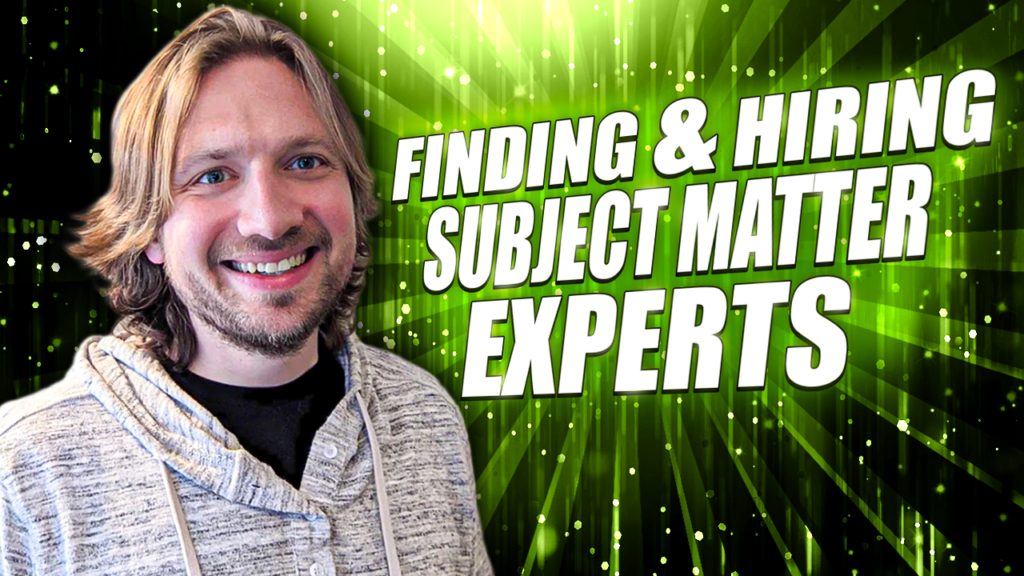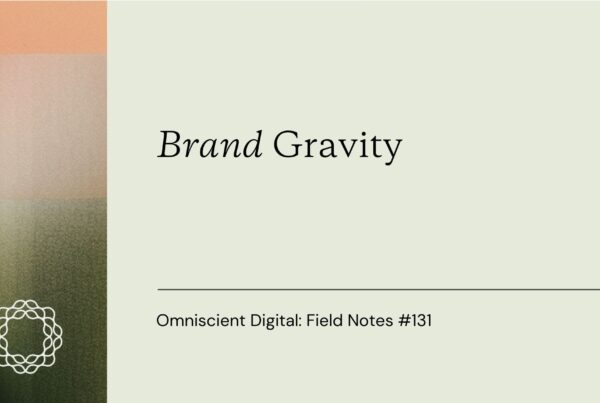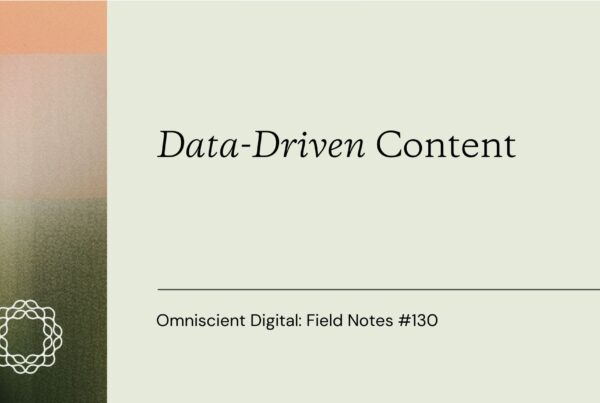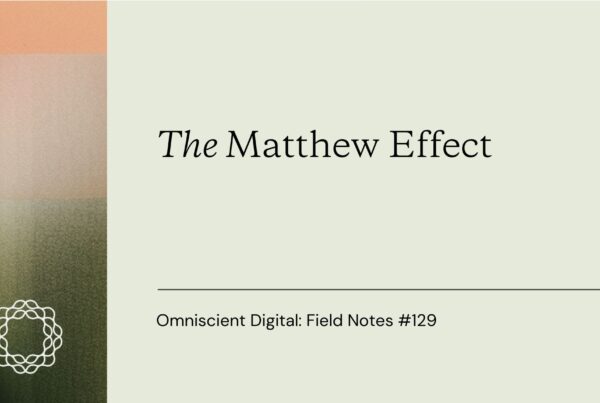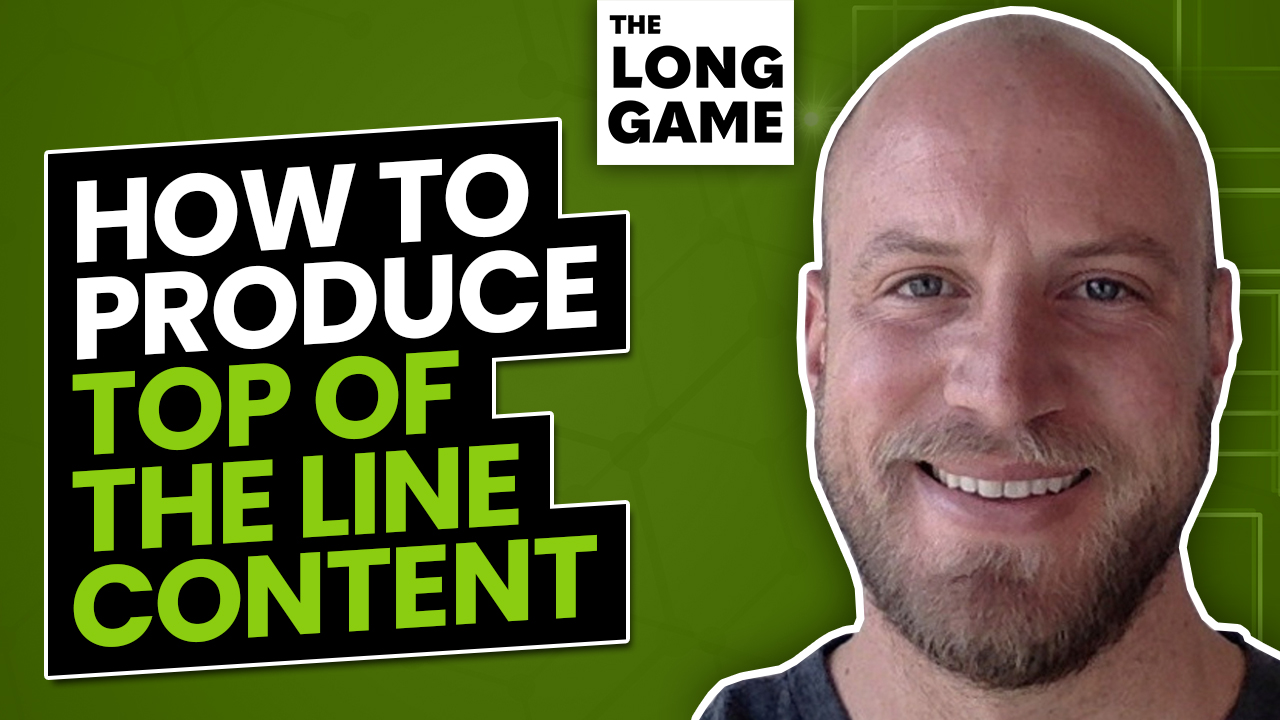
Content creation is a tricky business. You have to know what your clients want, when to say yes to new projects, and how to find the writers you need.
For Brad Smith, creating and producing top of the line content is his bread and butter. Brad is the CEO of Wordable, co-founder of uSERP, and founder and CEO of Codeless, all of which are aimed at producing, ranking, and publishing SERP-topping content.
During this episode of The Long Game, Brad shared with us his insight on determining content quality, how to work with clients, and what you need to scale content writing production.
Show Topics
- Train your writers on consistent practices
- Find out what content quality means
- Know when your client needs an in-house writer
- Figure out the client’s style
- Disqualify people as soon as possible
- Look at quality versus cost of applicants
- Don’t work with people who aren’t a good fit
- Wait to interview writers
- Embrace a ‘good enough’ mentality
Show Links
Get the Field Notes
Weekly learnings from working on B2B content & SEO for dozens of companies.
Listen to the podcast
Watch a clip
Key Takeaways
13:28 – Train your writers on consistent practices
Scaling writing is just like scaling any other system in your company. Find the common denominators, then make sure your writers are trained to follow those practices.
“The whole article format in our case, a lot of times, follows: problem, agitate, solution. Depending on, again, the type of content or query or whatever we’re focusing on. So in other words, there’s a lot of these consistent principles that should be incorporated into every piece of content that then can be customized to fit each client. So how can we train writers on this style and these practices? Because if you can train them like that, then we’re not as reliant on the “unicorn” writer, which doesn’t exist by the way. But like the unicorn writer that you’re going to find for that one company or that one client that just happens to be an amazing fit. It doesn’t need any training at all. I think a lot of people, a lot of companies especially, underestimate how much scaling writing is just like scaling any other thing in your organization. It’s training, it’s principles, it’s processes, it’s operations, all that boring stuff.”
14:42 – Find out what content quality means
Content is often subjective; what works for one client won’t work for another. Find your company’s standards for what makes a quality piece of content and go from there.
“Content quality is subjective. I wish it wasn’t, but it is. And so we were like, okay, we needed to find for ourselves what content quality means so that we don’t have one client tell us a content piece is bad, but the other client would say it’s good because it sounds different to each one. Usually when clients are talking about content quality, it’s stylistically. It’s not like, actually, is this good or bad? And so we wanted to define for ourselves what is a good piece of content and what are all the variables. And then from there to your point, for each client we might have templates. And a lot of times those templates are either based on the client or they’re based on the type of content or the query. So for example, a top of the funnel, how-to article might have one type of template versus a bottom of the funnel, Best XYZ, more affiliate, commercially driven piece of content. That’ll have a different template, which just might be a standard template that could be plugged in for any type of client at any given time.”
18:23 – Know when your client needs an in-house writer
You can’t always hire an expert to write on a highly technical topic. Learn when to tell your client to hire in-house to get someone with the necessary expertise.
“If it’s something that’s very bottom of the funnel, or very unique to that company, or it’s about their point of view, that’s when a company should hire an in-house writer and not even try to go down the scaling with an outside team. Because they’re going to be so particular about how it sounds, how it comes across, what is or isn’t said. There’s so much nuance and gray area involved that you’re better off just hiring in-house, training them, really get them to drink the Kool-Aid, so to speak. Agencies are better if you lack the expertise or you need scale and volume. And it’s usually a lot easier to scale top of the funnel content with very little domain expertise, if that makes sense. It’s an easier problem to solve than, how do I write a manifesto? Or something about how someone’s changing the finance space. That’s so hard to do by anyone outside. And again, a lot of times it’s because we don’t have the ability to train those people properly like you would an in-house person. We don’t have the time.”
21:04 – Figure out the client’s style
Every client has a different style, even if they don’t know it. Try to help your clients narrow down what style they want their content to be: formal, informal, or somewhere in between.
“What we try to do with clients is we try to be super upfront about this and say, ‘Look, a lot of this is going to be stylistic. Let’s figure out ways to bridge the gap.’ And we’re going to test multiple writers initially with different styles purposely, because a lot of times if clients don’t know what they want, they know what they don’t want. So we’ll show you three versions of something and you’re probably not going to like one or two of those, in most cases. And that’ll help us figure out, ‘Okay, you don’t like the overly formal writer,’ or conversely, ‘You don’t like the snarky, informal writer.’ From there we try to document. Don’t tell us you don’t like the sound of something. Tell us exactly what you don’t like about it. So I don’t like when you use too many conjunctions, and the sentences are too long, and the phrasing is too long, and it becomes clunky and wordy. That’s fine. We could do something with that.”
27:44 – Disqualify people as soon as possible
Don’t waste all your energy sorting through dozens of writers to find the right one. Give them a few paid test projects to see if they’re the right fit for your company.
“Our highest pay editors were having to do way too much work with reviewing brand new writers. And so it wasn’t a scalable process. And so we figured out a way to say, ‘Okay, let’s break it down into 5 to 10 steps. And we have to push people through these 5 or 10 steps. And if they get out the other side, then there’s an 80% chance of them sticking around for longer.’ So we might be giving writers paid articles to do. And they still might not make it all the way and might not be hired full-time. So we test everyone with paid work part-time or contracts first before hiring them full-time, and it might last one month, it might last three months. I tell people to hire writers like they hire salespeople. Hire three knowing you’re going to keep one. Because you don’t really know what you want, if they’re gonna be a good fit outside of just their style. So what this requires is a lot of stuff at the top of the funnel and then a very good process to pull people out of that or disqualify people as soon as possible so that you don’t have your highest-paid editors having to review a ton of stuff.”
29:35 – Look at quality versus cost of applicants
Do you want to hire a full-time writer or a few freelancers? The answer will determine which platform you use to find job applicants.
“What you’re looking for is a balance between volume or number of applicants coming in, the quality of those, and then the cost. So what doesn’t scale well for this operation is something like LinkedIn, where you’re paying per applicant or per click. And the quality sucks. The quality sucks. If we’re hiring like this for this purpose, Indeed, those places don’t work because those are in-house full-time people. And we want the hustlers who have already have a little bit of experience freelancing, because they tend to be a lot more focused on output, if that makes any sense. But we want writers, like workhorses, in an agency. We don’t have the time, like a SaaS company might to bring someone on and slowly ramp them up to three articles a week.”
37:01 – Don’t work with people who aren’t a good fit
Not every writer will fit your clients’ needs for content. It’s okay to say no to great writers if they don’t fit the form and style you’re looking for.
“Over time I think we’ve done a better job of realizing what aspect of content we’re really good at, and what that means for our clients. In other words, what our clients are looking for and get the most value out of. And then therefore that dictates how we should work and then how our writers are a good fit or aren’t a good fit. So in other words, there’s a lot of times we don’t work with writers or stop working with writers that are really good writers, probably arguably better at the act of writing than other people we use or work with, just because they’re not a good fit for the style of work. It just is what it is. It doesn’t mean that they’re personally not a good writer, it don’t mean we don’t like them. It’s just not a good fit for this very unique problem we’re trying to solve for clients.”
40:05 – Wait to interview writers
A test project will give you much more information about how a writer works than any interview could. Don’t interview writers until you’re ready to make a full-time job offer.
“We don’t actually interview writers either, upfront. We only interview them if we’re going to hire them full-time. This might be three months down the road of working together. And the reason for that is, again, because an interview for a role like writing can go off in too many red herrings and signals that don’t actually relate to, are they a good writer? And do they work in the system or not? So someone’s personality or how they give me an answer to something doesn’t tell me if they can meet deadlines, write about certain topics, intelligently spot problems before they happen. You only find those things after actually working together. So a lot of times we want to actually work with you and it might be different for different roles.”
1:13:08 – Embrace a ‘good enough’ mentality
Your writing doesn’t always have to be perfect. Most people won’t even notice the details you do, so be willing to say ‘good enough’ and move on to the next project.
“Smart people tend to over-complicate things, and in our rush, and good ideology of wanting to make something the best it could possibly be, that often works counter to a goal of making more money from this. And so at a certain point, we just need to say this is good enough. It doesn’t need to be amazing, because I think you had said earlier, readers and audiences don’t care if you use an en dash or an em dash. They probably don’t even know the difference. And they definitely, certainly don’t care. And so too many times smart people in our field get stuck in the weeds and they focus almost too much on quality or what in their mind is quality, when in reality it’s just, this needs to be good enough and you need to do way more of it, and you need to move faster at higher volumes.”
Join us for Office Hours on May 18th. Karl Hughes started Draft.dev to help companies create authentic technical content that resonates with software developers.
Karl will show you exactly how to replicate his process on:
- Finding and recruiting subject matter experts and technical writers
- Developing engineers within your organization to become writers
- Motivating and managing creators
- Paying contributors and the tax/legal implications
Register free
